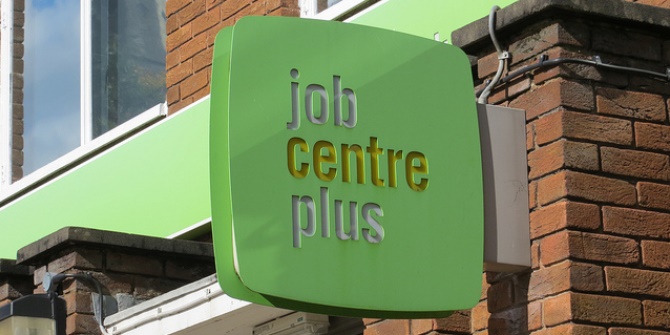 Across the youth justice system, young offenders’ views are not being listened to and in turn there has been a failure to act upon their wishes. But if this reluctance to allow youth offenders to have a say in the care they are receiving is not addressed, there will be a negative impact both on their personalities and on the risk of reoffending, explains Sean Creaney.
Across the youth justice system, young offenders’ views are not being listened to and in turn there has been a failure to act upon their wishes. But if this reluctance to allow youth offenders to have a say in the care they are receiving is not addressed, there will be a negative impact both on their personalities and on the risk of reoffending, explains Sean Creaney.
A context of enforcement, compliance, control, regulation and surveillance pervades youth justice across England and Wales. At its core it is court-ordered, compulsory, and adult-orientated. Such a system is not conducive to children being actively involved in the designing or shaping of policy and practice supervision. Rather than privileging children’s insights, it appears their voices are often marginalised through unequal power relations, and so youth offenders are depicted as being incapable of providing ‘credible’ accounts.
Participatory methods of practice in youth justice are virtually non-existent. This was the outcome of a fascinating report – submitted to the Charlie Taylor review of the youth justice system – published recently by Clinks in collaboration with Peer Power and Beyond Youth Custody. The report details how young people feel they are not being heard. Throughout all the stages of the youth justice system they feel it is a disempowering experience: “We are not listened to; the majority don’t want to listen,” one young person said.
In order to reconcile the lack of user-led engagement of offenders and experiences of disempowerment, the priority should be to involve young people in assessment and decision-making processes – throughout the youth justice system. And although at the practice level this way of working may be more difficult to implement, children must be provided with more creative and flexible opportunities to participate in the care they are receiving. Otherwise, young people may feel further disconnected.
Children engaging in such processes of change may be a challenge considering that some believe young offenders are not entitled to a voice given their ‘offender’ status. With society’s cultural ambivalence towards youth offending such a tension may be difficult to reconcile. Existing alongside notions that children are cute, content and in need of care is the idea that ‘pain’ must be inflicted on those who offend – acting as a demonstrative example of disapproval.
The need to punish is to an extent ingrained within society a sort of innate emotion. However, if a child commits a crime and enters the youth justice system they have a right to have their voices heard despite being labelled an ‘offender’. Listening to children’s voices can result in there being less chance children feel dissatisfied. If their voices are meaningfully captured they are more likely to engage and comply with the requirements of the court order and not just merely attend.
Young people may resist ‘support’ and disengage if they feel their views are not being taken seriously. Of particular relevance here is the United Nations Convention on the Rights of the Child (UNCRC) (1989). The UNCRC champions children’s participatory rights, emphasising in particular the need to involve children and devise services that are appropriate to ability capable of allowing for choice and influence.
With that said, the UNCRC has not, to any great extent, impacted on the treatment of children who in conflict with the law. The human rights of child prisoners lag somewhat behind rights provided to children generally. It took 13 years and a successful campaign from The Howard League for Penal Reform before the Children Act 1989 was considered relevant to children in the juvenile secure estate. Until then it was assumed children forfeited certain rights after being charged, tried and convicted in a court of law.
The idea of allowing the child some control and power over the process is uncomfortable to some. But participatory approaches can provide children with opportunities to share their unique insights into what a ‘criminal’ life is like for them. Children can explain ‘what works’ for them, raising points that professionals may not have considered. Children should – in accordance with the emphasis on participatory rights outlined in the UNCRC – choose how to participate and be provided with sufficient guidance and encouragement to engage in the process of change, as partners whereby the intervention is not done to but with the child.
Such participatory and inclusive practice can result in service/organisational improvement. This may be somewhat difficult to achieve in practice, though, with the justice system being primarily concerned with security and control. Moreover, despite resource pressures and time constraints, Youth Offending Services could embed dedicated listening/participatory spaces, where traditional power imbalances can be reduced and young people can exercise greater choice over provision. Creating such an environment enables professionals to empower children to influence the direction of the work, observing and not only listening but actually hearing what children say.
In addition to this, professionals need to accept any criticisms levelled at them from young people and in turn adapt in order to improve. We need to prioritise young people’s voices and understand their lived experiences. In turn, if practice is to become more participatory, professions need to be innovative and consider new ways of working that capture young people’s varying needs.
Professionals may find themselves working with clients in the Youth Justice System who are, it appears, reluctant to change and even resentful towards intervention. There are clearly challenges and complexities in relation to participation and involvement of young offenders in youth justice. However if practitioners are committed to identity transformation, enabling the child to create and sustain a positive new self, this can increase compliance with court orders.
On the contrary measures that are controlling and imposed aggravate matters and lead to resistance, increasing risk of reoffending. When the need to seek compliance is necessary, particularly with regard to children who have complex needs and vulnerabilities and the risks are perhaps greater, children need to ‘buy in’ to the requirement(s). They need to be allowed to shape what is being asked in order to maximise potential for success. For many of my suggestions to move from being aspirational to reality however, I feel the purpose of the youth justice system – as being the prevention of offending – would need to be adapted to reflect a more holistic participatory view. Perhaps when Charlie Taylor’s review of youth justice is finally published, this will be one of his key recommendations.
___
Note: the above draws on Sean’s co-authored article in Safer Communities. Opinions expressed here are those of the author and do not necessarily reflect the views of any organisation.
 Sean Creaney is an advisor at the social justice charity Peer Power, a Trustee at the National Association for Youth Justice, and a PhD candidate at Liverpool John Moores University. He writes The Youth Justice Blog in Children and Young People Now.
Sean Creaney is an advisor at the social justice charity Peer Power, a Trustee at the National Association for Youth Justice, and a PhD candidate at Liverpool John Moores University. He writes The Youth Justice Blog in Children and Young People Now.







It is not surprising that children are not being heard. The Youth Justice model diminished the involvement of local authority social workers and undermined consideration of children’s welfare and protection from abuse. As a children’s reviewing officer, I had to visit a young person on remand at the notorious privatized Medway YOI, and to purport to make a plan for them, because they were technically in care. In fact, as a result of a serious offence, the plan for this person was about to be made by a Judge sentencing them to several years of detention – so the review was a ludicrous and hypocritical paper exercise. Michael Gove, in addition to his responsibility for the Brexit vote, deserves serious criticism for his defective policies as Secretary of State for Education (and children) and as soi-disant not legally qualified “Lord Chancellor”.